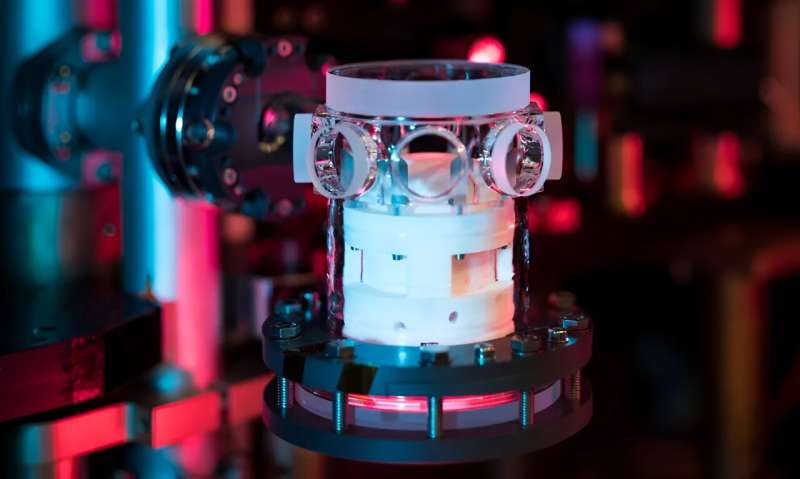This article has been reviewed according to Science X's editorial process and policies. Editors have highlighted the following attributes while ensuring the content's credibility:
fact-checked
peer-reviewed publication
trusted source
proofread
A deep look into the dipolar quantum world

In a new collaboration, two research groups, one led by Francesca Ferlaino and one by Markus Greiner, have joined force to develop an advanced quantum gas microscope for magnetic quantum matter. This state-of-the-art instrument reveals intricate dipolar quantum phases shaped by the interactions as reported in Nature.
Magnetic atoms are central to Ferlaino's research on unexplored quantum matter. At both the Institute of Quantum Optics and Quantum Information (IQOQI) of the Austrian Academy of Sciences and the Department of Experimental Physics at the University of Innsbruck, the experimental physicist and her team achieved the first Bose-Einstein condensate of erbium in 2012. In 2019, she led one of the teams observing for the first time supersolid states in ultracold quantum gases of magnetic atoms.
At Harvard University, German experimental physicist Markus Greiner is the pioneer of optical techniques allowing for the direct observation of individual atoms. Using high-resolution microscopy, the Harvard team has unveiled many exotic phenomena in strongly correlated ultracold atoms, as anti-ferromagnetic phases in 2017.
A few years ago, Ferlaino and Greiner combined their expertise to construct a quantum gas microscope tailored for magnetic atoms, aiming to access yet new phenomena. "Owing to their pronounced magnetic nature, these particles exert influence over greater distances compared to their non-magnetic counterparts, and their effects are consistently directional," Ferlaino notes. "The unique properties of these particles open up interaction regime in quantum gases unobservable in traditional experiments, granting fresh perspectives on solid-state behavior."
New quantum solids observed
The research teams collaborated for years to develop and build two new experiments, one in Austria and one in the U.S. Presently, both Harvard and Innsbruck are equipped with quantum gas microscopes tailored for dipolar quantum gases.
This technology is combined with laser beams to create a light crystal where erbium atoms, cooled to near absolute zero, nest. Magnetic fields reorient these particles, providing control over their long-range, dipolar interactions. With the microscope's lens nested within the glass vacuum cell, the entire arrangement evokes the imagery of a ship inside a bottle.
In Nature, Greiner's group now presents the first results of experimental work on the new platform. The researchers have demonstrated the ability to produce varied dipolar quantum solids from superfluid phases by adjusting the interactions between particles. Distinct patterns manifest in the microscope, ranging from stripes and checkerboards to diagonal lines. "In this context, the long-range dipolar interactions among particles determine the phase of the quantum matter, with the light crystal's organizing power being broken," says Ferlaino.
At the heart of this breakthrough was many years of close collaboration between two experimental research groups across an ocean. The joint work now facilitates simulations of quantum systems with long-range, dipolar interactions, laying the groundwork for a novel understanding of quantum matter. "Such simulations offer intriguing perspectives on phenomena governed by these interactions, like ferromagnetism," notes Ferlaino.
More information: Lin Su et al, Dipolar quantum solids emerging in a Hubbard quantum simulator, Nature (2023). DOI: 10.1038/s41586-023-06614-3
Maximilian Sohmen et al, A ship-in-a-bottle quantum gas microscope for magnetic mixtures, arXiv (2023). DOI: 10.48550/arxiv.2306.05404
Provided by University of Innsbruck





















